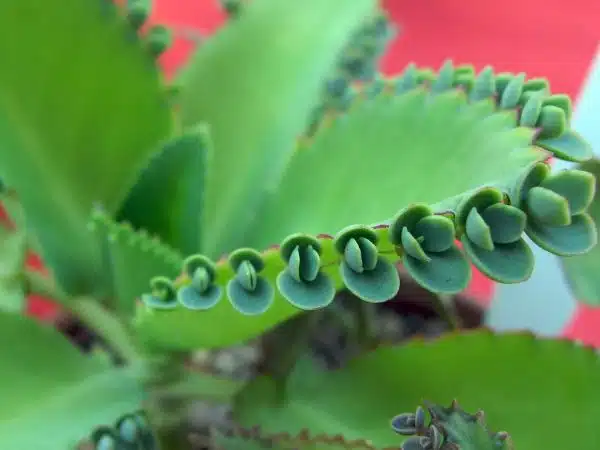Mexican Hat plants, also known as Ratibida columnifera, are a stunning addition to any garden or landscape. These flowering perennials are native to North America and are loved for their unique flowerheads that resemble sombreros worn by Mexican cowboys. Their drought-tolerant nature and ability to attract pollinators make them an excellent choice for gardeners looking for low-maintenance and eco-friendly plant options.
Growing and caring for Mexican Hat plants requires some basic knowledge of their preferred growing conditions, soil requirements, watering needs, and pruning techniques. In this article, we will provide a comprehensive guide to help you successfully grow these beautiful plants in your garden or landscape. Whether you’re a seasoned gardener or just starting out with gardening, this guide will equip you with the necessary information to care for and maintain your Mexican Hat plants so that they can thrive and serve as a source of beauty and inspiration in your outdoor space.
Overview Of Mexican Hat Plants
Mexican Hat Plants, also known as Ratibida columnifera, are a popular perennial flowering plant that is native to North America. This plant belongs to the Asteraceae family and can grow up to 3 feet tall. The Mexican Hat Plant is characterized by its unusual flower shape, which resembles a sombrero, hence the name “Mexican Hat.”
Interestingly, Mexican Hat Plants are attractive to pollinators such as bees and butterflies due to their nectar-rich flowers. The plant blooms from mid-summer through fall with yellow petals surrounding a dark brown cone in the center. It makes an excellent addition to any garden or landscape due to its eye-catching appearance and low maintenance requirements.
Overall, Mexican Hat Plants are an excellent option for gardeners who want an easy-to-grow perennial that adds color and interest to their landscape while attracting beneficial pollinators. In the next section, we will discuss the native habitat and climate requirements for this remarkable plant.
Native Habitat And Climate Requirements
Mexican Hat Plants: Native Habitat & Climate Requirements
Mexican hat plants, also known as Ratibida columnifera, are native to North America, specifically the central and western regions. This hardy perennial plant is well adapted to grow in harsh conditions and can thrive in a variety of habitats. Mexican hat plants are commonly found growing along roadsides, prairies, fields, and meadows.
Environmental factors play a crucial role in determining the growth and development of Mexican hat plants. These plants prefer full sun exposure but can tolerate some shade. They require well-draining soil that is not too rich in nutrients. Additionally, they can withstand periods of drought but do not do well in waterlogged soil.
The climate requirements for Mexican hat plants vary depending on the region they are grown in. They can tolerate cold temperatures down to -40°F (-40°C) and hot summers up to 100°F (38°C). However, they grow best in areas with mild winters and warm summers. Overall, Mexican hat plants are adaptable and resilient making them an excellent choice for gardeners who want a low-maintenance plant that can withstand different environmental conditions.
Markdown format list:
- Mexican hat plants are native to central and western North America
- They prefer full sun exposure but can tolerate some shade
- They can withstand periods of drought but do not do well in waterlogged soil
Transition sentence into subsequent section about choosing the right location: Now that we have discussed the native habitat and climate requirements for Mexican hat plants, let’s dive into how to choose the right location for planting them.
Choosing The Right Location
When considering the right location for a Mexican Hat plant, it is important to consider the amount of sun exposure it will receive as well as the type of soil. Mexican Hat plants prefer a sunny area with at least 6 hours of direct sunlight per day. The soil should be well-draining and slightly acidic to ensure the best growth and health of the plant. Mexican Hat plants are not particular about soil fertility, so fertilizing is not typically necessary.
Sun Exposure
Choosing the right location is crucial for the healthy growth of Mexican hat plants. One important factor to consider when choosing a location is sun exposure. These plants require full sunlight to thrive, so it’s important to choose a spot that receives at least six hours of direct sunlight per day. Without enough sun exposure, the plants may become weak and leggy.
When planting Mexican hat plants, it’s also important to pay attention to the planting depth. The seeds should be planted around ¼-½ inch deep in well-drained soil. If the soil is too compact or heavy, it may impede root growth and lead to waterlogging issues. Therefore, it is recommended to plant these plants in loose, sandy soil.
In addition to proper sun exposure and planting depth, watering frequency is also a crucial factor in ensuring healthy growth of Mexican hat plants. These plants prefer moist but well-drained soil and do not tolerate standing water. It’s recommended to water them deeply once a week rather than frequent shallow watering. Overwatering can lead to root rot while under-watering can cause stunted growth and poor flowering performance. By providing adequate sunlight, proper planting depth and appropriate watering frequency, your Mexican hat plants will thrive in your garden or landscape!
Soil Type
When it comes to choosing the right location for Mexican hat plants, there are several factors that gardeners need to consider. In addition to sun exposure and planting depth, soil type is another crucial factor that can affect the growth and health of these plants. Soil preparation is key in ensuring that Mexican hat plants receive the nutrients they need to thrive.
Before planting Mexican hat plants, it’s important to test the pH level of the soil. These plants prefer a slightly acidic soil with a pH range between 6.0 and 7.5. If the soil is too alkaline or acidic, it may affect nutrient availability and inhibit plant growth. Gardeners should amend their soil accordingly by adding organic matter like compost or peat moss.
Another important consideration when it comes to soil type is drainage. Mexican hat plants require well-draining soil that does not retain water for prolonged periods as this can lead to root rot and other issues. Gardeners should ensure their chosen location has proper drainage or consider creating raised beds if necessary. By paying attention to these factors related to soil type, gardeners can provide an ideal growing environment for their Mexican hat plants and enjoy healthy, vibrant blooms all season long!
Preferred Soil Type And Ph
After choosing the right location for your Mexican hat plant, it is important to focus on soil preparation. The plant prefers well-draining soil with good air circulation, which can be achieved by adding organic matter such as compost or aged manure. This will improve the structure of the soil and help retain moisture. It is also essential to ensure that the soil is not compacted, as this can affect root growth and development.
Mexican hat plants thrive in slightly acidic soil with a pH level between 6.0 and 7.5. It is recommended to test your soil’s pH level before planting and adjust accordingly. If your soil is too alkaline, consider adding elemental sulfur or aluminum sulfate to lower the pH level. On the other hand, if your soil is too acidic, you may need to add lime or wood ash to raise the pH level. Once you have achieved the ideal pH level, you can proceed with planting your Mexican hat seeds or transplants.
In summary, proper soil preparation and maintaining the ideal pH level are crucial for growing healthy Mexican hat plants. By following these guidelines, gardeners can create an optimal environment for their plants to thrive in. In the next section, we will discuss watering needs and frequency to further enhance the growth of your Mexican hat plant.
Watering Needs And Frequency
As gardeners, we often think that more water is always better. But just like how too much of a good thing can be harmful, excessive watering can also have dire consequences for your Mexican hat plant. Overwatering can lead to root rot and other fungal diseases that will ultimately damage your plant.
To maintain the health of your Mexican hat plant, it is important to keep an eye on the soil moisture levels. A good rule of thumb is to wait until the top inch or two of soil has dried out before watering again. This ensures that the roots are not sitting in water for prolonged periods of time, which could lead to root rot.
As for watering frequency, there is no one-size-fits-all answer as it depends on various factors such as climate and humidity levels. In general, Mexican hat plants prefer well-draining soil and do not require frequent watering. During hot summer months when evaporation rates are higher, you may need to water more frequently than during cooler seasons. The key is to pay attention to your plant’s needs and adjust accordingly.
Maintaining proper soil moisture levels is crucial for the health of your Mexican hat plant. While it may seem simple enough, overwatering or underwatering can have detrimental effects on your plant’s growth and overall well-being. In the next section, we will discuss fertilizing and nutrient requirements, which play an equally important role in ensuring a thriving Mexican hat plant.
Fertilizing And Nutrient Requirements
Mexican hat plants benefit from regular fertilization with a balanced fertilizer, such as a 10-10-10, to ensure they have adequate nutrients to grow and bloom. The nutrients required by Mexican hat plants are nitrogen, phosphorus, potassium, calcium, magnesium and sulfur. When fertilizing Mexican hat plants, it is important to apply the fertilizer at the recommended rate and only during the growing season. The fertilizer should be applied according to the manufacturer’s directions and prior to rainfall to avoid nutrient leaching.
Fertilizing
To achieve healthy and thriving Mexican hat plants, fertilizing is an essential part of their care. Organic and synthetic fertilizers are both options for feeding your plants, but the former is a more environmentally-friendly choice. Organic fertilizers provide long-lasting nourishment to the soil and do not contain harmful chemicals that can damage the plant’s root system. Examples of organic fertilizers include compost, worm castings, and bone meal.
On the other hand, synthetic fertilizers offer a quick boost of nutrients to the plant but can also harm beneficial microorganisms in the soil if used excessively. When using synthetic fertilizers, it is crucial to follow the manufacturer’s instructions carefully to avoid overfeeding or burning your Mexican hat plants. Additionally, it is advisable to use slow-release formulas that will gradually release nutrients over time instead of all at once.
When applying fertilizer to Mexican hat plants, it is best to do so during their active growing season, which typically occurs from spring through fall. It is recommended to fertilize every two weeks with a balanced fertilizer during this period. However, during winter dormancy or when new growth has ceased in summer heat, refrain from feeding them as they require little nourishment during these periods. Remember that proper fertilization practices are key to maintaining healthy and beautiful Mexican hat plants that will thrive year after year!
Nutrient Requirements
As horticulturalists or gardening enthusiasts, it is essential to understand the nutrient requirements of Mexican hat plants. These plants require a balanced blend of nitrogen, phosphorus, and potassium to thrive. Nitrogen promotes leaf growth, while phosphorus aids in root development and flower formation. Potassium helps with overall plant health and disease resistance. In hydroponic cultivation, these nutrients can be provided through water-soluble fertilizers.
Organic fertilizers are excellent options for providing Mexican hat plants with the necessary nutrients they need. Compost, worm castings, and bone meal provide long-lasting nourishment to the soil without using harmful chemicals that can harm beneficial microorganisms. Organic fertilizers also help maintain soil structure and improve water-holding capacity, which is crucial in hydroponic cultivation.
It is crucial to ensure that Mexican hat plants receive the right amount of nutrients at the right time. Over-fertilization can damage their root system or cause them to develop excessive foliage at the expense of flowering. It is advisable to use a balanced fertilizer every two weeks during their active growing season and refrain from feeding them during winter dormancy or when new growth has ceased in summer heat. By following proper nutrient requirements, Mexican hat plants will continue to grow healthy and beautiful year after year!
Propagation Methods
Mexican hat plants can be propagated through two methods: seed propagation and stem cuttings. Each method has its own advantages and disadvantages, so it is important to consider which method is best suited for your needs.
Seed propagation involves collecting seeds from mature Mexican hat plants and planting them in a well-draining soil mix. It is important to keep the soil consistently moist until the seeds germinate, which can take anywhere from 7-21 days. Once the seedlings have grown large enough, they can be transplanted into individual pots or directly into the garden.
Stem cuttings are another option for propagating Mexican hat plants. Cut a healthy stem from an established plant and remove the lower leaves. Dip the cut end into rooting hormone powder and plant it in a well-draining soil mix. Keep the soil consistently moist until roots begin to form, which can take 2-4 weeks. Once roots have formed, transplant the cutting into its own pot or directly into the garden.
Transitioning smoothly into pruning techniques:
Now that you know how to propagate Mexican hat plants, it’s important to also understand how to properly care for them as they grow. One aspect of care includes pruning techniques, which help maintain plant health and encourage new growth.
Pruning Techniques
Deadheading is a pruning technique in which spent flowers are removed from the plant to promote further blooming.
Staking can be necessary to provide additional support to Mexican Hat plants, which naturally grow tall and spindly.
Deadwood pruning is the removal of dead and decaying branches from the plant to encourage healthy new growth.
To determine which branches are dead, look for signs of discoloration, crumbling bark, and lack of leaves.
Deadheading, staking, and deadwood pruning are important pruning techniques for Mexican Hat plants, as they help to promote healthy blooming and growth.
Pruning should be done regularly throughout the growing season for optimal results.
Deadheading
As a horticulturalist, I understand the importance of deadheading in maintaining the health and appearance of Mexican hat plants. Deadheading is a simple pruning technique that involves removing spent flowers from the plant. By doing so, you allow the plant to redirect its energy towards producing new blooms instead of wasting it on developing seeds.
The benefits of deadheading go beyond just improving the appearance of your Mexican hat plants. It also encourages more vigorous growth and ensures that the plant continues to bloom throughout the growing season. However, it is important to note that not all flowers should be deadheaded at once. Doing so may shock the plant, causing it to stop blooming altogether. Instead, focus on removing spent flowers regularly as they appear.
To ensure successful deadheading, always use sharp, clean pruning shears or scissors to avoid damaging the stem or introducing diseases. Cut just below the base of each spent flower, making sure not to cut off any emerging buds or leaves. It is also advisable to deadhead early in the morning when temperatures are cooler and before bees start visiting your plants for nectar.
Staking
As a horticulturalist, it is important to understand and utilize various pruning techniques to maintain the health and appearance of Mexican hat plants. In addition to deadheading, staking is another essential technique that can benefit your plants in numerous ways. Staking involves providing support for your plants by using different types of stakes such as bamboo sticks, metal rods or wire cages.
The benefits of staking are many. Firstly, it helps prevent the stems from breaking under the weight of their own flowers or foliage, ensuring that your plant remains upright and healthy. Secondly, it provides better air circulation around the plant which prevents fungal diseases caused by moisture buildup. Lastly, staking can also improve the overall appearance of your garden as well as make harvesting fruits and vegetables easier.
There are different types of stakes that can be used for Mexican hat plants depending on their growth habits and size. Tall varieties may require taller stakes while shorter varieties may only need shorter ones. The most common type of stake is bamboo sticks which can easily be pushed into the ground beside the stem for support. Other options include metal rods or wire cages which provide more stability and durability but may be more expensive. Regardless of the type of stake used, it is important to tie the plant loosely to avoid damaging its stems or restricting its growth.
Deadwood Pruning
As horticulturalists, it is crucial to understand the importance of pruning techniques to maintain the health and appearance of Mexican hat plants. Deadwood pruning is one such technique that involves removing dead or diseased wood from a plant. This process can benefit the plant in various ways, such as promoting new growth and reducing the risk of pests and diseases.
One of the primary benefits of deadwood pruning is that it improves the overall health of the plant. Dead or diseased wood can attract pests and diseases, which can spread to other parts of the plant. By removing this wood, you are reducing the risk of these issues and allowing the plant to focus its energy on healthy growth. Additionally, deadwood pruning can promote new growth by stimulating dormant buds and improving air circulation around the plant.
When it comes to deadwood pruning, there are a few tips and tricks that can help you achieve optimal results. Firstly, make sure you are using sharp, clean tools to avoid damaging healthy wood or spreading disease. Secondly, only remove wood that is truly dead or diseased – cutting into healthy wood can harm the plant’s growth. Lastly, consider timing when deadwood pruning – for example, it may be best to wait until after flowering season for certain plants. By following these guidelines, you can ensure successful deadwood pruning for your Mexican hat plants.
Pests And Diseases
After learning about pruning techniques, it is important to also consider preventing infestations and treating plant diseases. Prevention is key when it comes to pests and diseases, as they can quickly spread and cause significant damage to your Mexican hat plants. Here are three ways you can prevent infestations:
Keep your plants healthy: Ensure that your plants are receiving adequate water, sunlight, and nutrients. Healthy plants are more resistant to pests and diseases.
Cleanliness: Regularly remove any dead leaves or debris from around your Mexican hat plants. Pests and diseases thrive in dirty environments.
Quarantine: If you notice any signs of pests or disease on one of your Mexican hat plants, immediately quarantine it from the rest of your garden until the issue is resolved.
Despite taking preventative measures, sometimes pest infestations or plant diseases cannot be avoided. In these cases, it is important to treat them as soon as possible to minimize damage to your garden. Here are three ways you can treat plant diseases:
Natural remedies: There are several natural remedies that can help treat plant diseases such as baking soda solutions for fungal infections or neem oil for insect infestations.
Chemical treatments: If natural remedies do not work, chemical treatments may be necessary for severe cases of pests or disease outbreaks.
Seek professional help: If you are unsure how to properly treat a specific pest or disease on your Mexican hat plants, it may be best to seek advice from a gardening expert or professional.
By taking preventative measures and addressing issues promptly, you can maintain the health of your Mexican hat plants and prevent further damage caused by pests and diseases.
To continue caring for your Mexican hat plants in a holistic way, the next step is attracting pollinators to aid in their growth and sustainability.
Attracting Pollinators
Attracting Pollinators:
Mexican hat plants are known for their beautiful, colorful blooms that adorn gardens and landscapes. However, these flowers serve a greater purpose than just aesthetic appeal. They are an essential source of food for pollinators, such as bees and butterflies. Attracting pollinators to your garden is crucial for biodiversity in gardening.
Pollinators play a vital role in the reproduction of plants, including Mexican hat plants. By transferring pollen from one flower to another, they enable the fertilization process, leading to the production of seeds and fruit. Without pollinators, our gardens would lack diversity and abundance. Therefore, it is essential to create an environment that attracts these beneficial insects.
One effective way to attract pollinators is by planting a diverse range of flowers that bloom at different times throughout the growing season. This ensures a steady supply of nectar and pollen for pollinators year-round. Additionally, providing shelter such as nesting boxes or piles of leaves can encourage pollinators to make your garden their home. Incorporating native plants into your garden is also beneficial as they have evolved alongside native pollinators and provide them with familiar food sources.
| Types of Flowers | Bloom Time | Pollinator Attracted |
|---|---|---|
| Mexican Hat | Summer | Bees |
| Black-eyed Susan | Summer | Butterflies |
| Sunflower | Fall | Bees |
| Wild Bergamot | Summer | Hummingbirds |
| Purple Coneflower | Summer | Bees & Butterflies |
Next up we have companion planting which is another great technique that can be used alongside attracting pollinators to maximize the potential yield!
Companion Planting
Attracting pollinators is an important aspect of growing Mexican hat plants, as they require cross-pollination for their reproduction. However, it is also essential to consider interplanting strategies that can improve the growth and yield of these plants. Companion planting is one such strategy that involves growing two or more plant species in close proximity to each other, which can provide benefits like pest control and nutrient enhancement.
Companion planting can be used to repel pests naturally without the use of harmful chemicals. For instance, planting marigolds alongside Mexican hat plants can deter insects like aphids and nematodes without harming beneficial insects like bees and butterflies. Other pest-repelling plants that pair well with Mexican hat include garlic, chives, and onions. These plants emit compounds that discourage pests from feeding on the leaves or roots of the main crop.
Interplanting with certain species can also improve soil quality, increase biodiversity and attract beneficial insects. For example, legumes like beans or peas are known to fix nitrogen in the soil which improves fertility for other crops including Mexican hat. Additionally, growing herbs like basil or dill alongside Mexican hat plants may help attract predatory insects such as ladybugs or lacewings which eat aphids and other small pests. By using interplanting strategies wisely gardeners can reap multiple benefits while reducing the need for chemical treatment.
In summary, companion planting is a great way to ensure healthy growth of your mexican hat plants while promoting biodiversity in your garden ecosystem. It’s a sustainable way to reduce pest damage while enhancing soil fertility naturally. Next up we will explore how container gardening can be used effectively to grow mexican hat plants even if you don’t have sufficient garden space available.
Container Gardening
Mexican hat plants are a great addition to any garden. However, if you don’t have a garden or space for planting, container gardening is an excellent alternative. Container arrangements can be placed on patios, balconies, and porches. In this section, we will discuss the basics of container gardening for Mexican hat plants.
One of the most important things to consider when it comes to container gardening is the size of the pot. You want to choose a pot that is big enough to accommodate the plant’s roots but not too big that it holds water and causes root rot. It would be best if you also considered using a vertical gardening technique where you can grow your Mexican hat plant upward instead of horizontally.
When choosing soil for your Mexican hat plant in containers, make sure it has good drainage and is nutrient-rich. You can mix regular potting soil with sand or perlite to ensure proper drainage. Fertilizer should also be applied regularly during the growing season to keep your plant healthy and thriving.
With these tips in mind, you can create beautiful container arrangements with your Mexican hat plants. Vertical gardening techniques allow you to maximize space while adding color and texture to your outdoor living area. In the following section, we will discuss winterizing and overwintering techniques for those who live in colder climates.
Transition: Now that we’ve covered the basics of container gardening for Mexican hat plants let’s move on to winterizing and overwintering techniques for those who live in areas with colder temperatures.
Winterizing And Overwintering
As winter approaches, it is important to take measures to protect your mexican hat plants from the cold temperatures. One of the most crucial steps in winterizing is protecting the roots. This can be done by adding a layer of mulch around the base of the plant to insulate the soil and retain moisture. It is also important to ensure that the plants are well-watered before the first frost, as this will help them survive through the winter.
In addition to protecting roots, insulating leaves is another key factor in overwintering mexican hat plants. One way to do this is by covering them with burlap or other breathable fabric, which will help trap warm air and prevent freezing damage. Another option is to spray them with an anti-transpirant, which can help reduce water loss and protect against frost damage.
By taking these steps to winterize and overwinter your mexican hat plants, you can ensure their health and longevity for years to come. In the next section, we’ll explore some of the common varieties of these beautiful and unique plants, so you can choose which ones are right for your garden or landscape.
Common Varieties Of Mexican Hat Plants
As one of the most popular wildflowers in North America, Mexican hat plants are available in a wide range of varieties that gardeners can choose from. These species vary not only in their appearance but also in their growth requirements and maintenance needs. If you are planning to grow Mexican hat plants in your garden, it is essential to learn about the common varieties available out there.
One of the most popular Mexican hat plant varieties is Ratibida columnifera. This species features tall stems with reddish-brown disks atop bright yellow petals that give this plant its iconic sombrero shape. Another commonly grown variety is Ratibida pinnata, which has a more delicate appearance with vibrant green foliage and light-colored flowers with drooping petals. Finally, Ratibida tagetes is another popular variety known for its stunning golden-yellow flowers and bushy growth habit.
When growing Mexican hat plants, it’s crucial to keep in mind some general tips for maintenance and care. These plants require full sun exposure and well-draining soil to thrive; thus, make sure to plant them where they can get at least 6 hours of sunlight per day. Additionally, avoid overwatering as it can lead to root rot or other fungal diseases that can damage the plant’s health. To promote healthy growth, fertilize your Mexican hat plants with a balanced fertilizer every two weeks during the growing season.
As you consider adding Mexican hat plants to your garden landscape or expanding your current collection, understanding the different varieties’ characteristics will help you choose the best fit for your space and preferences. By following these growing tips and maintenance suggestions while caring for your new plants, you’ll be on your way to enjoying beautiful blooms year after year! In the next section, we’ll answer some frequently asked questions about these fascinating wildflowers that will provide more insight into their unique qualities and needs.
Frequently Asked Questions (Faqs
Frequently Asked Questions (FAQs)
Gardening enthusiasts who are interested in growing Mexican hat plants often have a few questions about their care and maintenance. Here are some of the most common queries with expert answers.
What is the best location for planting Mexican hat plants? Mexican hat plants thrive in full sun or partial shade, but they prefer locations that receive at least six hours of direct sunlight each day. It is also important to plant them in well-draining soil to prevent waterlogging, which can lead to root rot.
How often should I water my Mexican hat plants? Mexican hat plants require moderate watering, and it is essential to avoid overwatering them. Water your plants only when the top inch of soil feels dry to the touch. Be sure not to let the soil dry out completely, as this can cause stress and damage to your plant.
What are some common problems that I might encounter while growing Mexican hat plants? One of the most common issues with these plants is powdery mildew, a fungal disease that can affect foliage and flowers. To prevent this problem, ensure good air circulation around your plant and avoid overhead watering. Another issue is aphids infestation, which can be treated with insecticidal soap or neem oil.
What are some best practices for maintaining healthy Mexican hat plants? To keep your Mexican hat plant healthy and thriving, it’s important to prune it regularly to promote bushier growth and remove dead or damaged leaves and stems. Fertilize your plant once a month during the growing season with a balanced all-purpose fertilizer, following the manufacturer’s instructions carefully.
By following these best practices and keeping an eye out for common problems such as powdery mildew or aphids infestation, you can successfully grow beautiful Mexican hat plants in your garden without any hassle or stress!
Conclusion
Mexican Hat Plants, also known as Ratibida columnifera, are a unique and striking addition to any garden or landscape. These native wildflowers thrive in hot, dry climates and are easy to care for, making them an ideal choice for both experienced and novice gardeners.
When choosing a location for your Mexican Hat Plants, it is important to consider their native habitat and climate requirements. These plants prefer full sun and well-drained soil with a pH between 6.0 and 7.0. They can tolerate drought conditions but require regular watering during periods of extended heat or dryness.
If you plan on growing Mexican Hat Plants in containers, it is essential to use a high-quality potting mix that drains well. Container-grown plants may require more frequent watering than those grown in the ground, so be sure to check the soil moisture level regularly.
One interesting statistic about Mexican Hat Plants is that they are an important source of nectar for pollinators like bees and butterflies. In fact, according to the Xerces Society for Invertebrate Conservation, Ratibida columnifera is one of the top ten plant species visited by native bees in western North America.
Overall, Mexican Hat Plants are a beautiful and low-maintenance addition to any garden or landscape. With proper care and attention to their specific climate and soil needs, these wildflowers will thrive and provide a valuable food source for local pollinators.
Image Credits





























